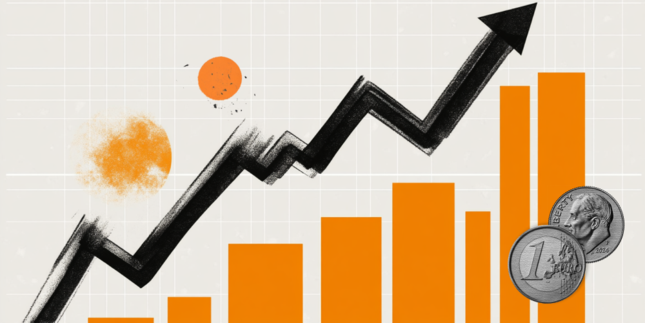![]()
This week I am back in my hometown of London to teach one of Online Trading Academy’s foundational classes, the Professional Forex Class. Here in the UK, currency trading is huge and as an asset class it is without doubt the most popular market to trade for most who are interested in getting into trading. Before actually trading, you find that the majority of people out here have maybe bought or sold some stocks at one time or another and following this, if they maintain interest, they take a shot at actual trading which as we know is very different to the world of buy and hold Investing. I have found that when I spend time teaching in the United States, people tend to not begin with FX but instead they carry on trading stocks but with a little bit of margin and more frequently.
Irrespective of what you trade though, you really do need to know what you are doing from the very start, or you will likely end up losing more than you ever set out to in the first place. For some people education begins officially in a classroom, which is by far the best possible start you could have. The majority though, pick up some books and read some articles on the Internet much like this, before they take their education any further. If that is the route you’re taking, you’ll probably find one of the very first lessons you will learn is about Japanese candlesticks and this is probably one of the most vital lessons as without candlesticks it’s pretty hard to read a price chart. The candlesticks themselves tell us if prices are going up, down or sideways and used in the correct manner, they are a powerful tool for honing our entries, stop losses and exits. But much like any other regular conventional technical analysis, Japanese candlesticks can also cause as many problems as they attempt to actually solve.
When I first got into trading myself I picked up a few books that were entirely devoted to Japanese candlestick charting methods. Let me tell you these were not short books and it took me a very long time to learn all the different names of all of the different candles and what they actually meant on a price chart. I remember drawing each one out and revising and testing myself to see if I knew what it was called and if I also knew what it meant on the chart when the candle formed. It was a nightmare and I felt like I was reviewing for an exam when I was back in school! I distinctly remember looking at my price charts and getting excited when I saw those special candles form before my eyes and then confusing myself wondering what it actually meant as I quickly rustled through my notes to see if I should be buying or selling. Typically I wasted a lot of time and then jumped into the market way too late. I would find myself getting stopped out or maybe I dismissed the trade completely. But that was all I knew at the time and from what I’d read, these candlesticks were pretty powerful tools. Only after getting the right education and starting to look at the market from a logical perspective was it that I really started to see candlesticks in a very different light…no pun intended.
Before I go any further let’s take a look at some of the most basic candle patterns you will find on most charts today:
Above shows six of the most common and widely recognized candlestick formations from conventional technical analysis. They each may indicate a certain change in price direction, when they appear at specific points in a trend. The engulfing candle suggests a continuation of trend, the hammer or hanging man is usually found at the end of a trend and suggests a reversal, the Harami also suggests a potential reversal, the shooting star is much like a hammer and can be a signal that trend is about to change direction while the spinning top and the doji are both signs of indecision and when a shift in momentum may be looming in the market. While it may sound neat to know the different names of these particular candlesticks, just by looking at their structure you can get a good idea of whether or not we are seeing strong buying and selling pressure or simply a state of indecision without having to actually know what they’re called.
For example a hammer candle really tells us that prices were pushed down significantly, only then to see strong buying stepping in to push the price back up. The shooting star is the exact opposite of this, because it shows us that while prices did rise on the candlestick, intense selling pressure came in at the top of the candle’s range, resulting in the price being pushed back down and closing much lower in the overall range. In terms of conventional technical analysis we expect to see patterns and events like this forming around major market timing points where trends tend to end and new ones likely begin.
Now I’m not trying to discredit the advantage in recognizing these particular candles and what they suggest about looming price action, however as with most things in trading we also need to focus on price itself and as is a common issue with most strategies we find in regular publications and books, the typical methods that the majority of traders use to incorporate candlestick patterns into their trading, tend to lead to poor entries and weak risk to reward scenarios. Let’s take a look at this in a little bit more detail:
In the above example, I have marked off a quality area of Institutional Supply that represents the dynamics of the Online Trading Academy Core Strategy. The imbalance between the buyers and the sellers was seen when prices dropped from the area at 1.3875, an area which was originally formed on 04/28. Our rules-based strategy tells us to sell the currency pair as prices enter the zone of supply with a tight stop just above the zones itself in case we are wrong about the trade. The stop has us out closest to the point in which we are proven wrong but also this has us getting into the market at the best time, which offers us the greatest potential reward.
As we can see the prices fell from the supply area and by getting in early, we had a great trade. If we would have just used traditional candlestick patterns on the other hand and waited for “confirmation,” things would have been very different. You will see that a “Doji” reversal candle formed in the zone that would have given a conventional trader a heads up to get ready for a short. They would have then waited for another candle to break the lows of the doji before getting short, giving them a much later entry and a lower potential reward and bigger risk. The justification of waiting for the doji confirmation is that it appears safer to wait because we have all been conditioned to “better be safe than sorry.” In reality though, what appears initially to be safer ironically turns out to be higher risk as you are forced to sell short after prices have already fallen down significantly.
Yes, you could argue that the trade still worked out and of course I can’t deny that, but the overall risk to reward ratio is significantly reduced and in the long run this is one of the most fundamental dynamics that a trader needs to pay attention too. Typically in our experience and using our core strategy, candlestick patterns are really nothing more than another odds enhancer for your trades. The first reason to take a trade should always be due to what the prices are telling you and then everything else becomes supplementary. So my friends, please breathe a sigh of relief, as you really don’t need to memorize every candle and every name of each one to be successful at market speculation! In two weeks I will continue this discussion and look at how candle patterns can be used with supply and demand in the most effective manner. I hope this was useful to you.
The information provided is for informational purposes only. It does not constitute any form of advice or recommendation to buy or sell any securities or adopt any investment strategy mentioned. It is intended only to provide observations and views of the author(s) or hosts at the time of writing or presenting, both of which are subject to change at any time without prior notice. The information provided does not have regard to specific investment objectives, financial situation, or specific needs of any specific person who may read it. Investors should determine for themselves whether a particular service or product is suitable for their investment needs or should seek such professional advice for their particular situation. Please see our website for more information: https://bustamanteco.com/privacy-policy/
Editors’ Picks

EUR/USD stays strongly bid above 1.0500 amid German Conservatives win election
EUR/USD stays strongly bid above 1.0500 in the European morning on Monday. The pair cheers the German Conservatives Party win in the federal election, which revives hopes for better economic outlook. The further upside could remain elusive due to a cautious market mood. Germany's IFO data eyed.

GBP/USD: Gains remain capped below 1.2700 ahead of BoE-speak
GBP/USD kicks off the new week on a positive note but remains below 1.2700 in the early European trading on Monday. Broad US Dollar weakness helps the pair regain ground but the upside appears capped as traders turn cautious ahead of speeches from several BoE policymakers.

Gold price remains confined in a multi-day-old trading range; sits near all-time peak
Gold price continues to draw support from persistent worries about Trump’s tariff plans. The emergence of fresh USD selling and inflation concerns also underpin the XAU/USD. Hawkish Fed expectations keep a lid on further gains for the non-yielding yellow metal.

Dogecoin bears remain strong despite Elon Musk’s endorsement
Dogecoin extends its decline, trading around $0.23 on Monday after falling 8.55% last week. Coinglass’ long-to-short ratio for DOGE reads below one, indicating more traders are betting for a correction while the technical outlook projects a pullback toward the $0.20 level.

Money market outlook 2025: Trends and dynamics in the Eurozone, US, and UK
We delve into the world of money market funds. Distinct dynamics are at play in the US, eurozone, and UK. In the US, repo rates are more attractive, and bills are expected to appreciate. It's also worth noting that the Fed might cut rates more than anticipated, similar to the UK. In the eurozone, unsecured rates remain elevated.
RECOMMENDED LESSONS
Making money in forex is easy if you know how the bankers trade!
Discover how to make money in forex is easy if you know how the bankers trade!
5 Forex News Events You Need To Know
In the fast moving world of currency markets, it is extremely important for new traders to know the list of important forex news...
Top 10 Chart Patterns Every Trader Should Know
Chart patterns are one of the most effective trading tools for a trader. They are pure price-action, and form on the basis of underlying buying and...
7 Ways to Avoid Forex Scams
The forex industry is recently seeing more and more scams. Here are 7 ways to avoid losing your money in such scams: Forex scams are becoming frequent. Michael Greenberg reports on luxurious expenses, including a submarine bought from the money taken from forex traders. Here’s another report of a forex fraud. So, how can we avoid falling in such forex scams?
What Are the 10 Fatal Mistakes Traders Make
Trading is exciting. Trading is hard. Trading is extremely hard. Some say that it takes more than 10,000 hours to master. Others believe that trading is the way to quick riches. They might be both wrong. What is important to know that no matter how experienced you are, mistakes will be part of the trading process.

The Best brokers to trade EUR/USD
SPONSORED Discover the top brokers for trading EUR/USD in 2025. Our list features brokers with competitive spreads, fast execution, and powerful platforms. Whether you're a beginner or an expert, find the right partner to navigate the dynamic Forex market.

